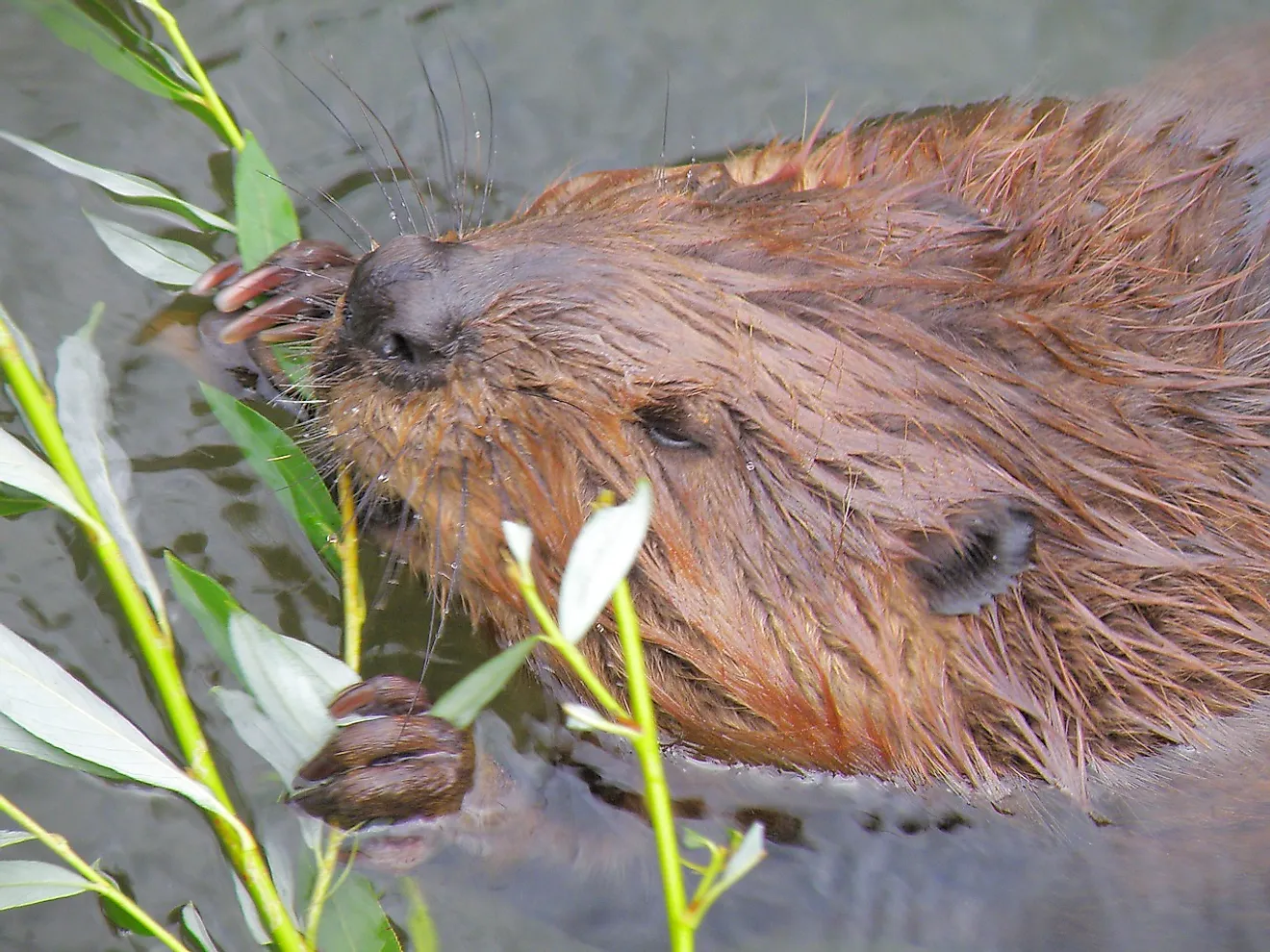North American Beaver Facts: Animals of North America

5. Physical Description
The North American beaver is the largest rodent in North American and one of the largest in the world, and arguably one of the most important in history. One of the main reasons that Europeans explored North America, especially Canada, was to hunt fur- and meat-bearing animals, and the beaver was no exception. North American Beavers’ scientific name, Castor canadensis, means “Beaver from Canada.” Generally speaking, these beavers grow to be about 45 pounds in weight, although there have been rare cases in which they have grown to be more than 100 pounds. They are generally about 35 inches in length not counting the tail, which itself adds about another 10 inches. The most distinctive feature of any beaver is its tail and teeth. Beavers have a long, wide, paddle-like tail that is designed to help to make them into better swimmers. As semi-aquatic animals, they also have webbed hind feet, although their front paws are not webbed as this makes it easier to get around when on land. The beaver also can pride itself in its large front teeth, which are used for chewing through wood to fell trees to be used in building dams.
4. Diet
Beavers generally rely on trees as their main source of food. They eat the buds, leaves, and bark alike. Poplar and aspen are often their favorites, although they will use almost any tree that happens to be nearby. They will also eat aquatic plants, such as water lilies, depending on seasonal and geographical differences in food availability.
3. Habitat and Range
Beavers are widespread throughout North America, and may be found in most areas of the continent. There remarkable diaspora ranges from subarctic climes to tropical regions. They were once hunted to near extinction, as there was huge demand for their fur, but this is no longer the case. Most real fur in contemporary times is sourced from commercial “fur farms”, while a good deal comes from synthetic (non-living) sources as well. Additionally, many of their natural predators, namely certain bears and wolves, have themselves become endangered, and humans consume them for meat with less regularity than in times past. These factors have combined to result in very healthy beaver populations across much of the continent. Another one of the reasons for healthy beaver populations is that they can live almost anywhere that there is water. This has helped them to avoid the issues with humans encroaching on their territory that have decimated so many other wetland and semi-aquatic species. In fact, in some cases beavers may be found living right in the middle of large cities. At times, humans have even settled in lands cleared by beavers and utilized their dams.
2. Behavior
The building of dams is one of the most unique features of beaver behavior. The dams can in some cases become quite large. They build the dams in order to provide an area of deep water around their homes that will not freeze in the winter. They use the deep water as a way to escape from predators, which usually include bears and wolves throughout most of their natural range. Beavers usually live in colonies, and these communities can include several dozen members. While they can live on dry land or in the water, they tend to spend most of their time in the water, as this helps to keep them safe from predators who have neither thick skin to tolerate wetness nor the swimming prowess of beavers. In general, beavers are most active at night, although they may often be seen during the day as well.
1. Reproduction
Beavers normally mate for life, and produce one set of offspring each year. Usually this happens during the spring, with two or three “kits” per litter being normal. Most of the time, these young kits will stay with their parents for the first two years of their lives, and then start breeding with partners of their own when they reach three years of age.











